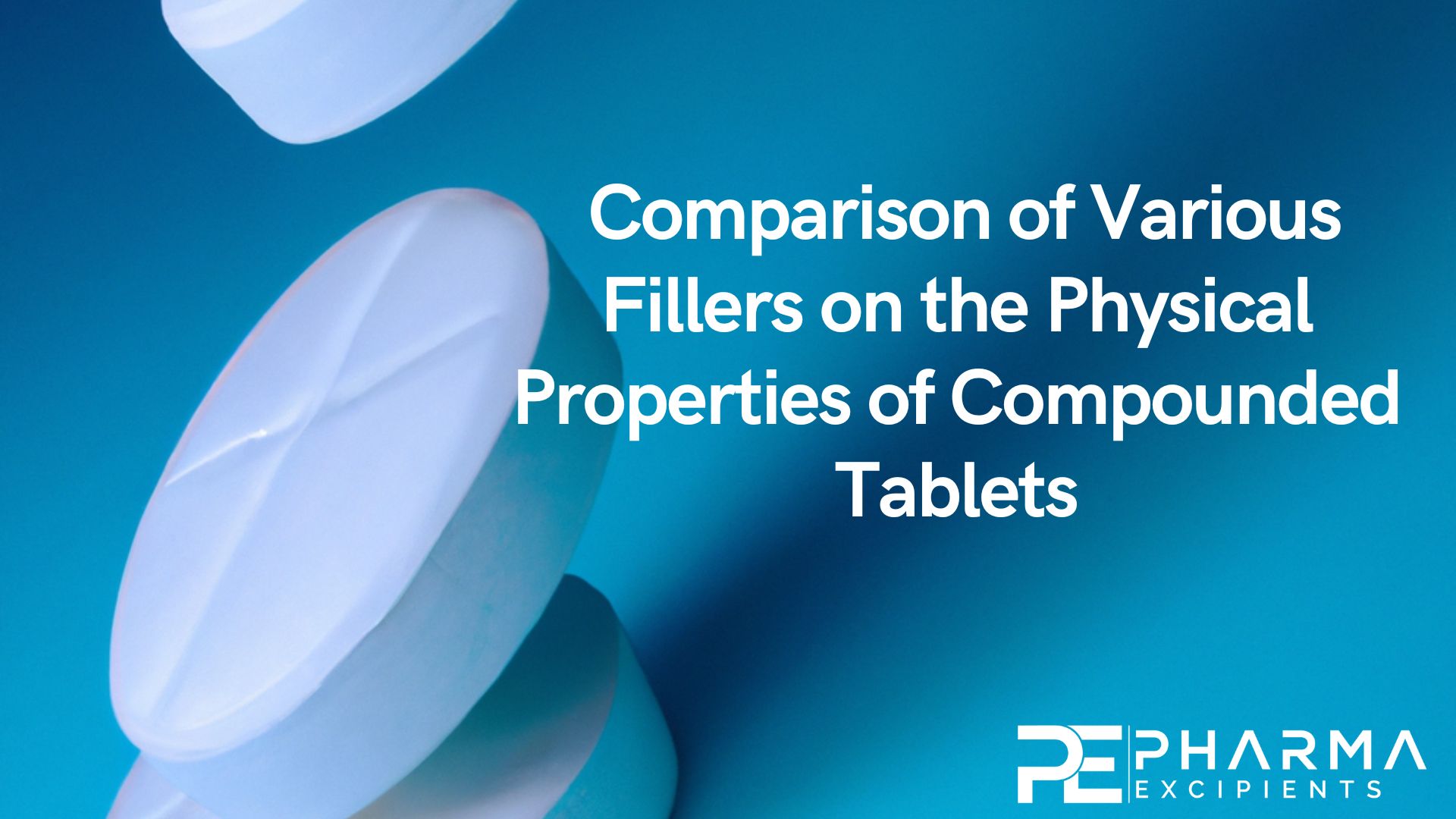Comparison of Various Fillers on the Physical Properties of Compounded Tablets

Abstract
Compounded tablets are solid dosage forms that contain active pharmaceutical ingredients that are usually formulated with suitable pharmaceutical excipients. Fillers are inert ingredients used as bulking agents that can affect the physical properties of the final compounded tablet. The objective of this study was designed to compare various types of fillers on the physical properties of compounded tablets. The fillers used in this study were starch, lactose monohydrate, microcrystalline cellulose, GranuLac 200, SorboLac 400, and CombiLac. The wetgranulation method was used to compound the tablets, and the physical characterization of the compounded tablets was evaluated for their weight variation, hardness, thickness, friability, and disintegration. Formulation 2a, which incorporated 50 mg of A. muricata extract and 200 mg of starch as a filler, was chosen as the most optimum formulation as it produced the best physical characterization test results when compared to other formulations. Formulation 2a disintegrated within the specified time limit of 7.41 minutes while having the desired hardness and friability of 5.52 kg and 0.67%, respectively. Moreover, it produced a uniform weight and thickness. Formulations 1, 2, and 7 possessed promising properties, suggesting its potential for compounding tablets containing A. muricata extract as a tablet supplement. These findings warrant further thorough investigations.
Introduction
Herbal supplements are available in a variety of dosage forms, with tablets having the most potential when compared to other dosage forms since they are more compact, lighter, less expensive, and easier to pack, carry, and store. The physical properties of pharmaceutical powders are critical in the pharmaceutical industry1 due to the fact that products must achieve optimum powder flow to obtain end products with the following: acceptable content uniformity, weight variation, and physical consistency.2 Various methods are recommended and are widely used in industrial applications for determining the flow properties of powders, including2 : measuring the angle of repose, bulk density (BD), tapped density (TD), Carr’s index (CI), and Hausner ratio (HR). Following the completion of the manufacturing process, final product quality-control (FPQC) tests (i.e., weight variation, friability, hardness, thickness, disintegration tests) for pharmaceutical compounded tablets are performed in accordance with U.S Pharmacopeia3 specifications to determine whether the quality parameters are within the acceptable limits.4 Fillers (or diluents) are pharmaceutical ingredients that are not pharmacologically active are essential in tablet preparations. Fillers consist of heterogeneous groups of substances intended to constitute the necessary amount of the tablet when the drug dosage itself is insufficient to generate the bulk. The range of fillers in a pharmaceutical formulation may differ from 5% to 80%. 5 As one of the most well-known excipients, starch is a classic excipient that is utilized in a variety of pharmaceutical formulations. Depending on the implementation, certain starches can be employed as disintegrants, fillers, or binders.6 As a diluent, starch is used to promote appropriate mixing processes in manufacturing operations, especially by the wet-granulation process.7 Besides starch, microcrystalline cellulose (MCC) is another filler that is commonly used in pharmaceutical applications, mainly as a binder or diluent in oral tablets and capsules, where it is used in both wet-granulation and directcompression processes. MCC is extremely compact, and its integration can add strength and robustness to tablets.8 GranuLac 200 and SorboLac (400 types) fillers consist of fine, sharp-edged lactose monohydrate 17-µm particles with cohesive powder properties that can be beneficial during granulation processes. The advantages of using GranuLac 200 are the same as those of SorboLac.4 Milled alpha-lactose monohydrate grades have been historically used as diluents in dry- and wet-granulation processes by numerous global and regional pharmaceutical manufacturers.4 CombiLac is an integrated, lactose-based, co-processed excipient. The composition of Combilac is 70% of α-lactose silicon dioxide, monohydrate; 20% MCC; and 10% white, native corn povidone. CombiLac shows improved compaction property and friability compared to an equivalent admixture of individual ingredients.9
Download the full study as PDF here Comparison of Various Fillers on the Physical Properties of Compounded Tablets
Materials
Starch (Lot No. 9005-25-8) and lactose monohydrate (Lot No. 20180507) were purchased from Techub Allied Services, Bukit Bintang, Kuala Lumpur, Malaysia. Microcrystalline cellulose (Lot No. 18050801), Magnesium stearate (Lot No. 20190704), and Colloidal silicon dioxide (Lot No. 20120715) were obtained from Pro Prima, Petaling Jaya, Selangor, Malaysia. SorboLac 400 (Lot No. L103842816A545), GranuLac 200 (Lot No. L1004 A4020), and CombiLac (Lot No. 5610230545) were purchased from MEGGLE Pharma, Wasserburg am Inn, Germany. Povidone (Lot No. 9003-39- 8) was supplied from Bio3 Scientific, Puchong, Selangor, Malaysia.
Nur Syazwana Farhanis Roslan, Liew Kai Bin, Mohammad F. Bostanudin, Fashli Syafiq Abd Razak, Comparison of Various Fillers on the Physical Properties of Compounded Tablets, Journal of Pharmaceutical Negative Results (2022) Volume 13, Special Issue 7
DOI: 10.47750/pnr.2022.13.S07.019

